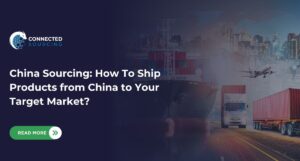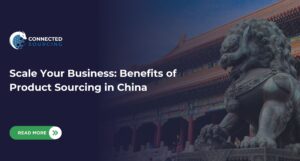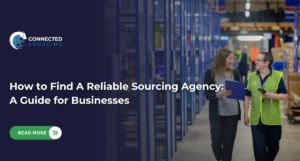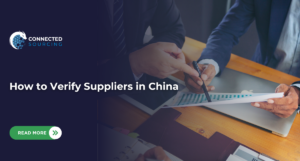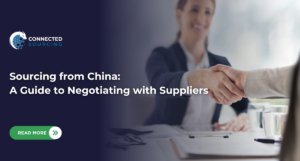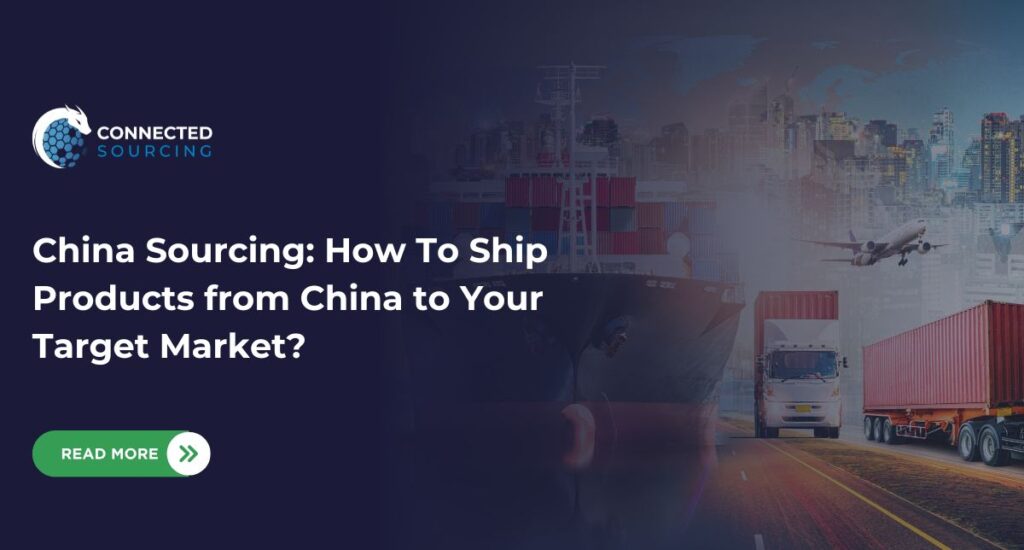
Sourcing products from China has been proven to be a fantastic opportunity for cost optimisation, especially for small and medium-sized businesses. Yet, after successfully completing product development, supplier qualification, and manufacturing, another intricate process takes place—which is shipping the products from China to the target destination.
Successfully sourcing products from China to your market also hinges on efficient shipping. It can seem like a complex process considering all the steps involved such as selecting suppliers, choosing a shipping method (air, sea, or express) customs clearance, documentation, etc. Not only do we ensure products reach their destination, it is also important to make sure products arrive safely, within budget, and on time.

Despite it seeming complex, a clear understanding of the process can make it become manageable.
This guide will walk you through the essential steps, considerations, and common methods for getting products from the factory floor to your target market.
1. Sourcing and ordering
Find Reliable Suppliers
Start by researching and identifying reliable manufacturers or suppliers in China that can fulfill your requirements. Checking online B2B ecommerce platforms or attending trade shows can be a good starting point.
Also, partnering with an expert sourcing agent can make the process easier and more efficient as they act as intermediaries, finding and connecting businesses with reliable manufacturers and suppliers.
Negotiate Terms
Once you have potential suppliers, it’s time to negotiate terms with your supplier on product quality standards, pricing, payment terms, and delivery timelines. Don’t overlook any details.
Place Your Order
Once you have finally agreed on the terms, formally place your order and arrange payment using the agreed-upon method like Telegraphic Transfer (T/T) or Letter or Credit (L/C).
2. Arrange Transportation
Choose Your Shipping Method For Your Products
When importing products from China to your target destination, it is crucial to have an understanding what shipping mode is the best option for you. Here are some popular options:
- Sea Freight: Best and most cost-effective option for large, bulky shipments. If you are importing in bulk and time is not a critical factor, this is likely your go-to.
- Rail Freight: A good alternative to sea freight, especially for reaching destinations that are far from major ports. Rail offers a practical solution.
- Airfreight: This is the preferred shipment mode if you are importing urgent or high-value goods from China.
- Express Shipping: You can opt for express shipping for small, urgent packages that need door-to-door delivery via couriers like DHL, UPS, DPD, Hermes, Royal Mail, and FedEx.
Secure A Competent Freight Forwarder
Find your logistics partner who can help you manage international shipping, custom clearance, and the entire transportation process. They handle complicated customs procedures and ensure the safety of your goods.
To secure a trustworthy partner from China, delve into the company’s background, assess their experience in the field, verify their international licenses and memberships, examine their office network, and see if they are able to consistently meet deadlines.
💡 Tip: Connected Sourcing arranges freight forwarding services for nearly all of our sourcing clients. Our dedicated team have relationships with all the major carriers and are able to obtain the best available rates on the market due to our relationships and longevity.
Compare Costs
Gather and compare detailed quotes from various freight forwarders to ensure you get the most competitive rates and service offerings for your shipping needs.
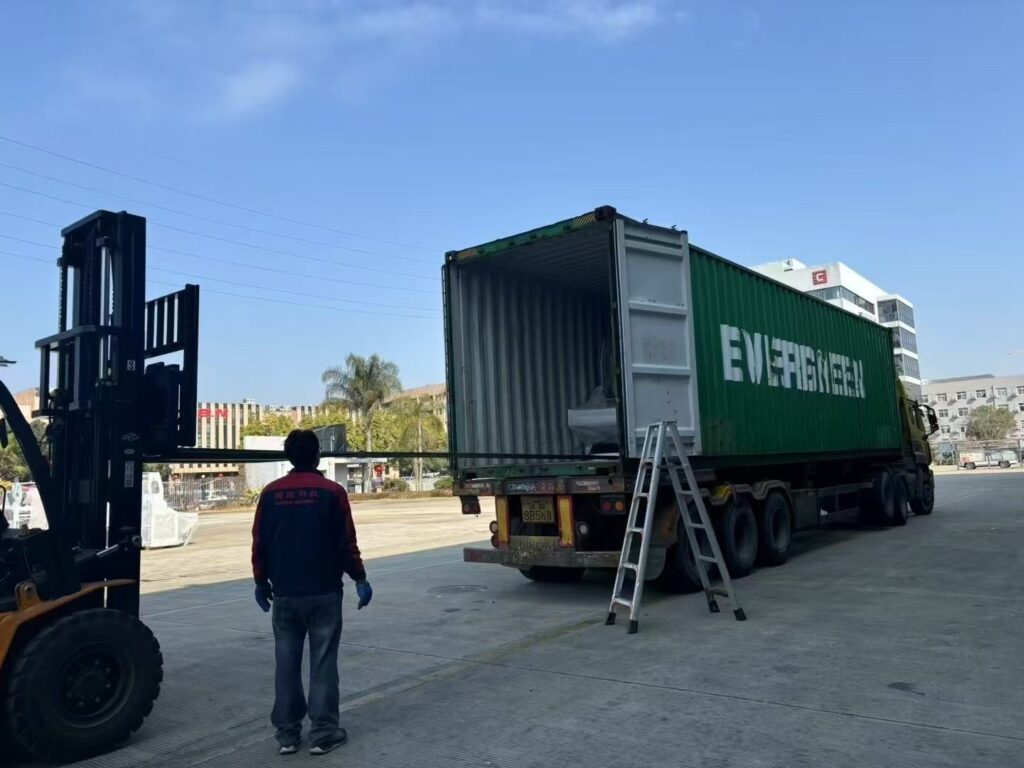
3. Prepare Documentation
To get ready for shipment from China, you will need to obtain essential documents for both logistics and custom clearance. These typically include proforma invoice, commercial invoice, packing list, and bill of lading. Keep in mind also that certain products may require specific certifications.
- Proforma Invoice: This is the preliminary document that details what you are buying—item descriptions, quantities, costs, and sales terms. It can be used to get pricing, apply for permits to import, or arrange financing, even though it is not a final contract.
- Commercial Invoice: This serves as the legally binding financial document of your transaction, confirming the agreement between you and the supplier. This outlines the goods’ description, individual item values, payment terms, and shipping terms. Custom officials use it as the primary tool to accurately calculate the import duties and taxes during the customs clearance process.
- Packing List: This document gives a precise breakdown of each package’s contents, weight, and dimensions in a shipment. It is essentially a comprehensive checklist for all parties involved, preventing discrepancies and streamlining the verification process.
- Bill of Lading (B/L): This serves as a binding contract between you, the cargo owner, and the carrier. This confirms the carrier has received your shipment, details the transportation terms, and legally confirms your ownership of the goods. This is required to successfully claim your shipment when it arrives at its final destination.
- Certificate of Origin (COO): This document verifies the product’s country of manufacture or sourcing. Its purpose is to meet trade agreement criteria and determine the eligibility for duty exemptions or reduced tariffs. This is issued by the originating country’s authority and is frequently required during customs clearance.
- Letter of Credit (LC): This stands as a highly secure payment method designed to protect both the buyer and the seller. It protects both parties. It guarantees the supplier will receive payment upon meeting shipment terms, while the buyer is confident goods will be shipped as agreed. It is a valuable tool for mitigating risk, especially for high-value shipments or when dealing with new trading partners.
💡 Tip: It is easier if you partner with a reliable freight forwarder. They can handle logistics, customs clearance, and transportation.
4. Understand Duties, Taxes, and Custom Clearance
Know the Important Regulations
Familiarise yourself with all the import regulations in your destination country designed to ensure safety, legality, and proper taxation. These regulations encompass prohibited goods, licensing requirements, and mandatory customs clearance that applies to every shipment entering your destination country.
While understanding these rules is vital for a seamless import experience, you’re not on your own. Freight forwarders and licensed customs brokers can provide invaluable assistance, helping you avoid costly delays and meet all legal standards.
Pay Duties and taxes
Familiarise yourself with all the import regulations in your destination country designed to ensure safety, legality, and proper taxation. These regulations encompass prohibited goods, licensing requirements, and mandatory customs clearance that applies to every shipment entering your destination country.
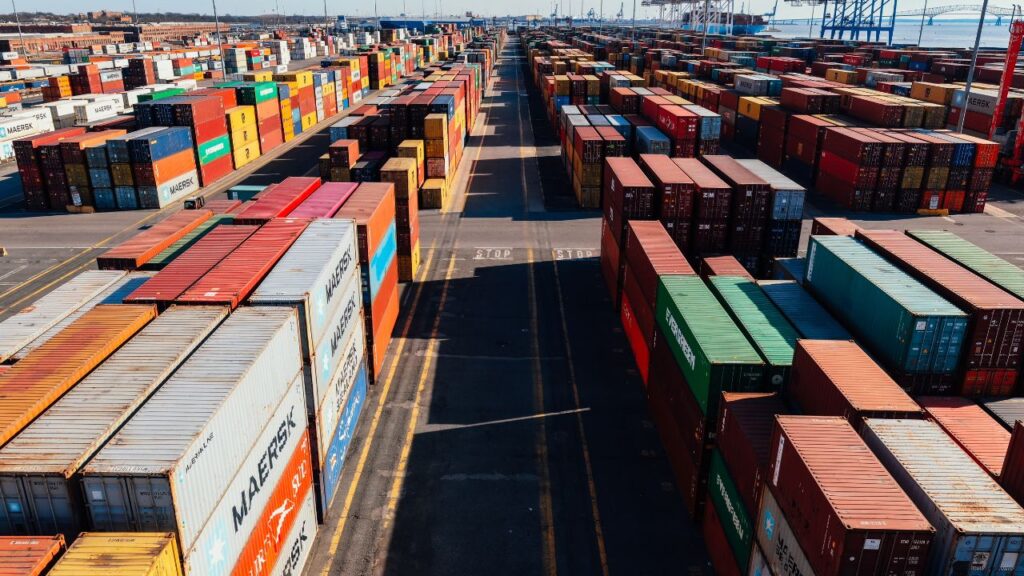
5. Track Your Shipment and Prepare for Arrival
Obtain A Tracking Number
Use the tracking number to monitor your shipment’s progress. Stay updated. Regularly check your shipment’s status and be ready to resolve any problems that might come up.
Your freight forwarder will also provide you with tracking information once your goods are on their way.
Delivery
Once cleared by customs, your goods will either arrive directly at your specified location (if you chose door-to-door delivery), or they will be ready for pickup at the designated port or airport.
Why Rely on Connected Sourcing
Importing products from China requires expertise in shipping procedures and relevant trade terms. A trusted sourcing partner and freight forwarder is a significant asset.
Connected Sourcing brings over 20 years of experience, having successfully delivered numerous shipments to different parts of the globe, including US, Canada, UK, Australia, South Africa, Italy, Germany, Kenya, Hongkong, and more.
With a number of trusted global warehouses and fulfillment centres located in different parts of the world, you can rest assured that your goods are well-protected and in safe hands before it gets delivered to you.
Talk to us!
Frequently Asked Questions
1. How do I receive my goods from China?
We provide customised door-to-door global shipping solutions, leveraging trusted logistics partners and expertise in customs and duty regulations, while identifying cost-savings opportunities for your products.
2. What documents are needed for import from China?
Ensure your invoice includes: product details, pricing, quantities, and all terms of sale.
3. What types of bills of lading are available for importers?
Importers can use different kinds like the "Straight Bill of Lading," "Order Bill of Lading," and "Bearer Bill of Lading", each giving you varying levels of control over your shipment.

